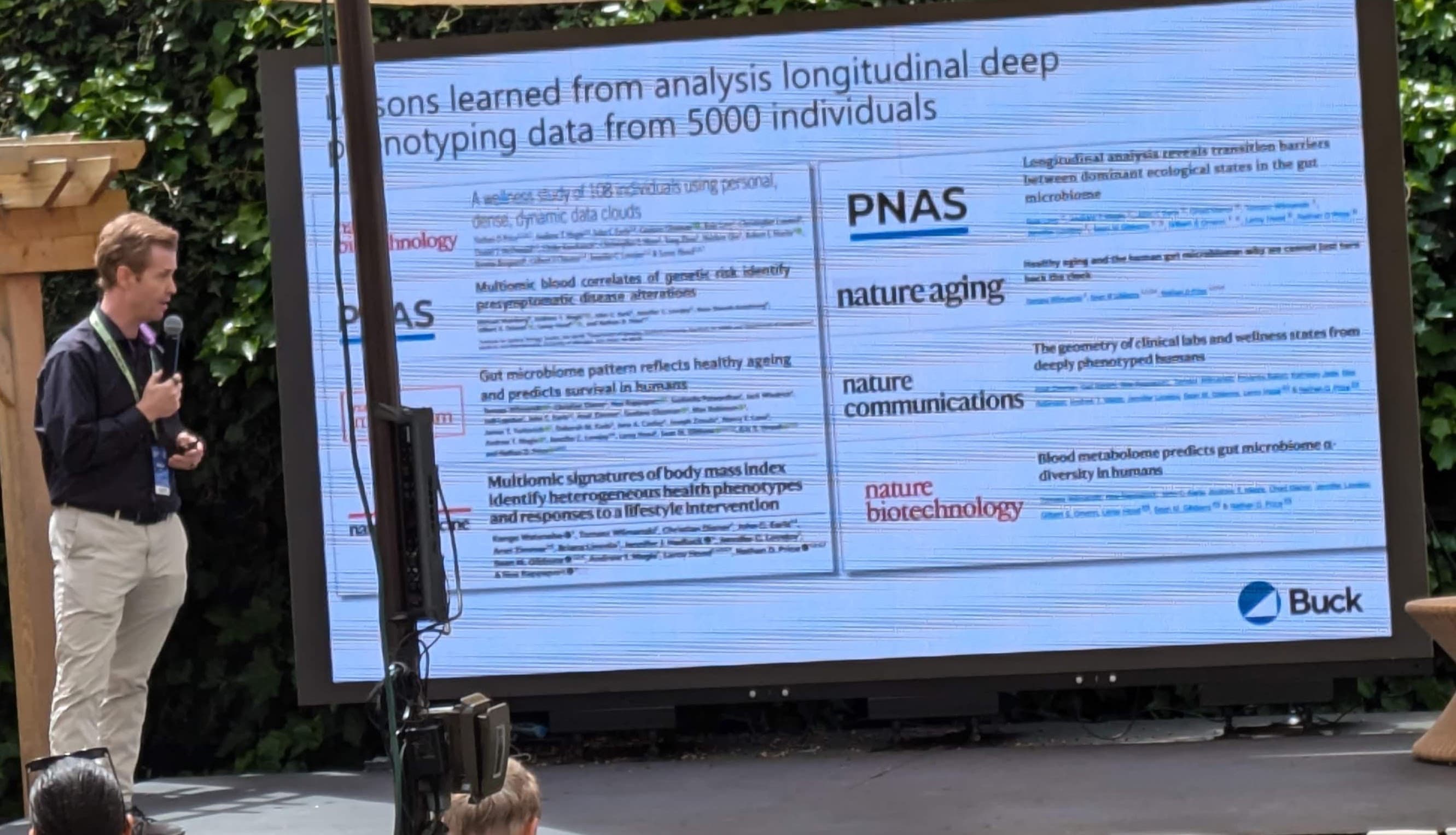What point, that everyone doesn’t know, are you trying to make?
And education starts with children.
I have been exercising in an open air “fitness area” and sometimes some school children would come by with physical ed. teacher trying to get them to exercise.
I am always shocked how unfit they are and how many are overweight. I was checking statistics on overweight children and it is horrible. In some areas the number reaches 50-70%. And an overweight child has more chances to become an overweight metabolically unhealthy adult…
I finally got around to reading The Age of Scientific Wellness. It aligned perfectly with what I have been imagining as the ideal approach to healthcare based on endless consumption of The Drive and this website.
Does anybody know where this has gone? I see that Nathan Price is affiliated with Thorne and the Buck Institute. Has anybody on here interacted with these guys or kept track of what they’re up to these days?
I saw him at the Vitalist Bay conference in May in Berkeley. He’s still at the Buck. Working on the same stuff. I have the book but haven’t read it yet. Did you find there were any actionable insights from it?
No actionable insights from the book. This is what interests me most: You have the obvious advice to exercise more, get more sleep, eat well, have community, etc. If we had urban design and economy organized properly, this would be as passive as access to clean water. But in our country, at this time, we need to actively choose our priorities.
Your primary care doctor isn’t going to pay attention to anything until you have a complaint, and then it had better fit into a disease. According to the book, Nathan and Lee had success prospectively in disease avoidance interventions with some of their study participants (who had iron issues from hemochromatosis) and success retrospectively in identifying signs of disease long before the traditional system discovered it (where they found evidence (after the diagnosis) of cancer emerging in a blood sample taken two years prior to the diagnosis).
I am sympathetic to their view that we need massive machine learning so we have a digital twin to tell each of us what we individually should prioritize. The book was inspiring, and I think any benefit downstream of the book will be from practitioners inspired by it, not from specific insights anybody on this forum would pull from it.
Here is the WSJ article by Nathan Price and Lee Hood, covering their perspective:
The AI Will See You Now
As medical research produces ever more data on health and disease, doctors are turning to artificial intelligence to help them make the best decisions for patients.
By Lee Hood and Nathan Price, April 7, 2023 9:58 am ET
By virtue of their medical training, doctors have a wealth of knowledge, experience, wisdom and judgment. Yet even the greatest of human brains can’t remember or interpret a tiny fraction of the information now available on human health and disease. Just a few years ago, most medical decisions were based entirely on the knowledge in the head of the doctor at the time the decision was made. Today that is beginning to change, thanks to the rapid development of artificial intelligence.
The evolution that brought the world ChatGPT and similar large language models is making AI one of the most quickly adopted technologies in history, promising profound changes for the way we live and work. Some of the most important will take place in the field of healthcare. As the technology behind these systems progresses, AI will soon be as much a part of our healthcare experience as doctors, nurses, waiting rooms and pharmacies. In fact, it won’t be long before AI has mostly replaced or redefined all of these.
A host of AI “decision support systems” are already helping to give physicians access to a wealth of information at the point of care. These systems leverage what computers are naturally good at—storing, recalling and correlating vast amounts of information virtually instantaneously—and link it to the ability of a human expert to reason intuitively and think creatively.
When early so-called “expert systems” were first being developed in the 1980s and 1990s, they were met with hostility by many physicians who worried that computers would soon be in charge of medical decision-making, taking the “doctor’s touch” out of the equation and binding the hands of physicians whose opinions differed from the computer’s analysis. But that’s not what happened. Research has shown that these systems have gotten better and better at helping doctors spot potential outcomes that they might have missed, without taking the ultimate decision-making authority out of their hands.
We are fast approaching an age of ‘centaur doctors,’ combining the best parts of human intelligence and AI assistance.
Read the full story: The AI Will See You Now (WSJ)




